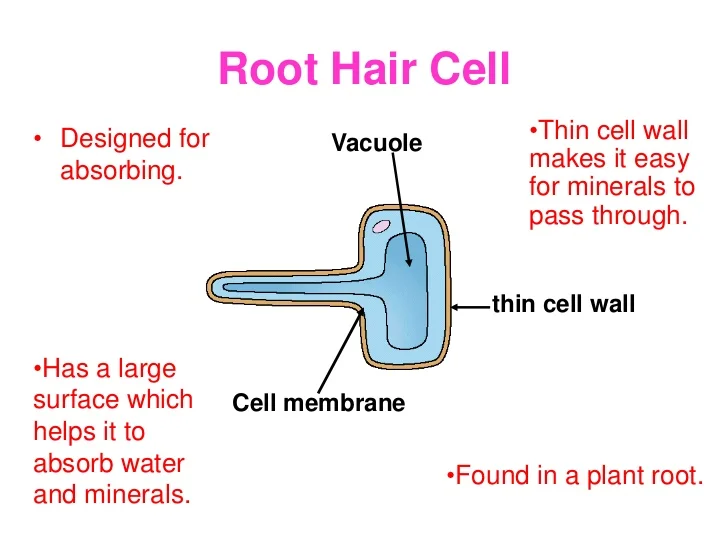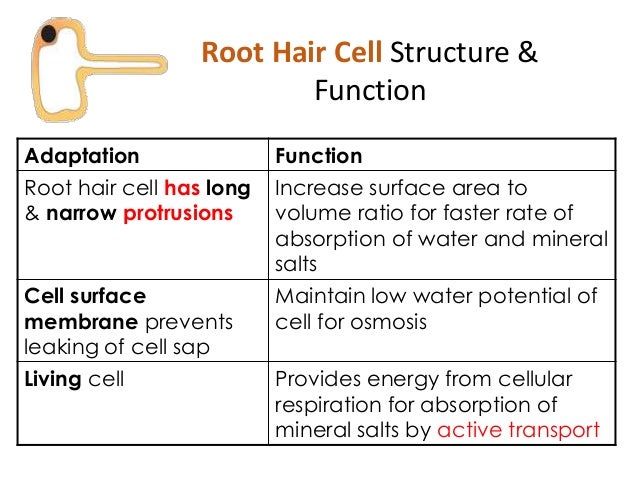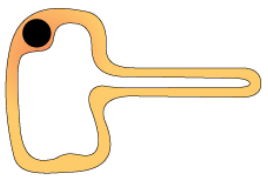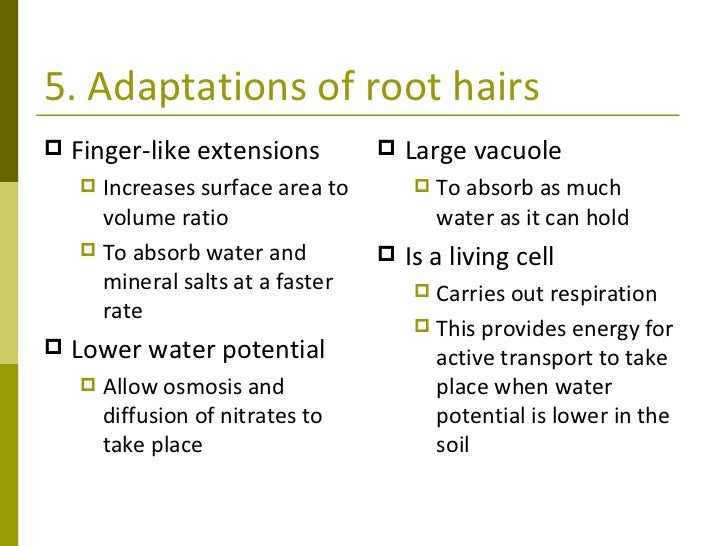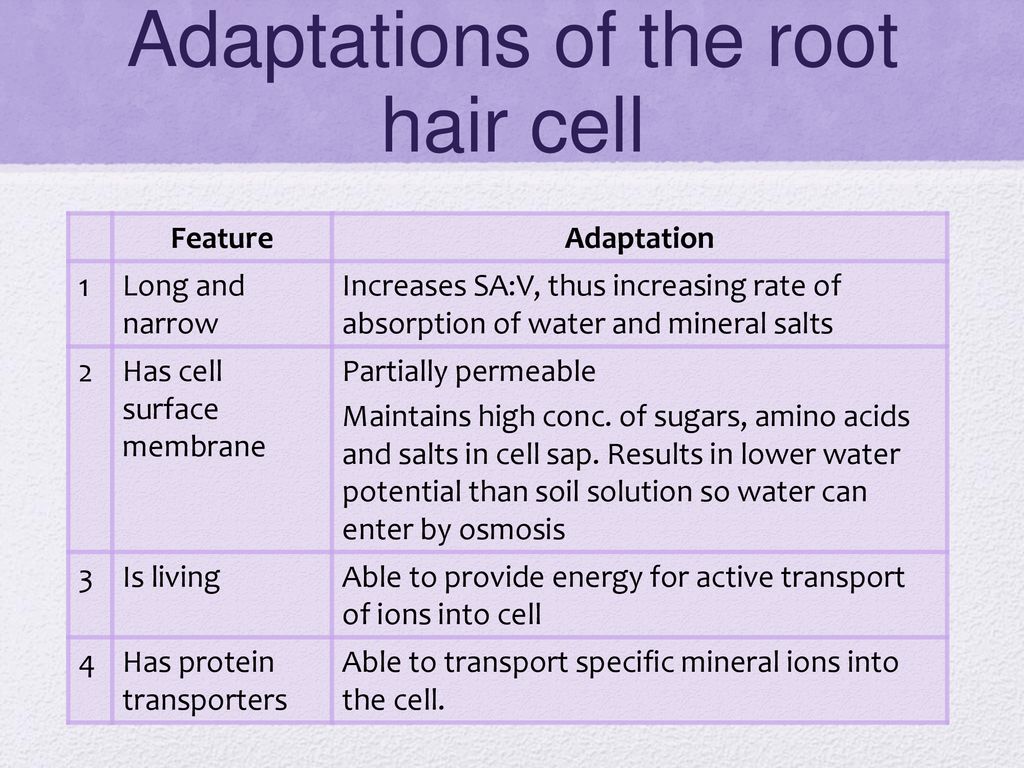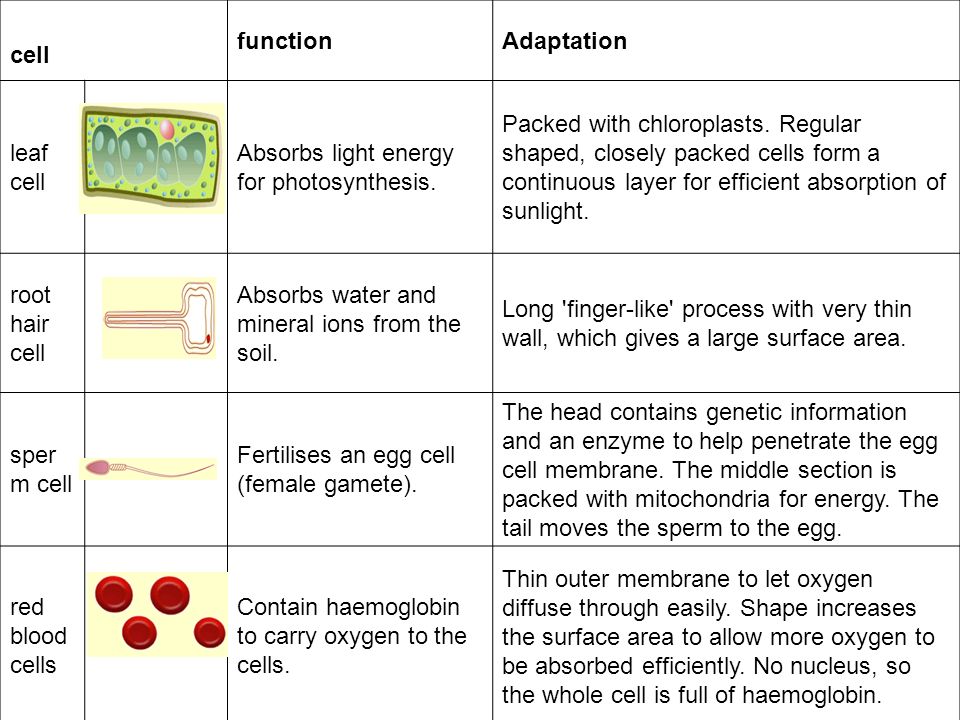Root Hair Cell From A Plant Function And Adaptation
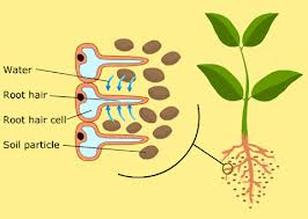
They then carry these nutrients and water up to the rest of the plant by way of the plant s roots.
Root hair cell from a plant function and adaptation. They are found only in the region of maturation of the root. The root hairs are where most water absorption happens. Plants have an extensive network of root hirs so they occupy a large surface area so plants can effectively absorb water and minerals from the soil. The function of the root hair cell in plant is to absorb water and.
Another adaptation that they have is root hair cells have a large permanent vacuole. Asked by wiki. They are long and thin so they can penetrate between soil particles and they have a large surface area for absorption of water. Root hair cells have a very large surface area due to them being very long and having hair like projections.
A root hair or absorbent hair the rhizoid of a vascular plant is a tubular outgrowth of a trichoblast a hair forming cell on the epidermis of a plant root as they are lateral extensions of a single cell and only rarely branched they are visible to the naked eye and light microscope. They also allow a plant to take in the minerals it needs to survive. Plants absorb water from the soil by osmosis. While the root is a complex multicellular organism root hairs are very small single celled and only extend out just a few millimeters from the root.
Root hairs are an extension of the root. These cells are located underground. Adaptation of root hair cell. How is the root hair cell adapted to its function.
The function of the root hair cell is to obtain water from the ground and transport this to the xylem. The root hair cells collect nutrients from the water as well as water itself from the soil. Root hair cells are found in plants and their function is to absorb water and minerals from the surrounding soil. This allows more active transport of mineral ions to take place so the plant is able to take in as many important mineral ions as possible e g.
Root hair cells are invisible to the naked eye but can be seen with the assistance of a microscope. Their structure allows the plant to absorb more water. It absorbs water and is a plant cell the roots hair collect food from.



